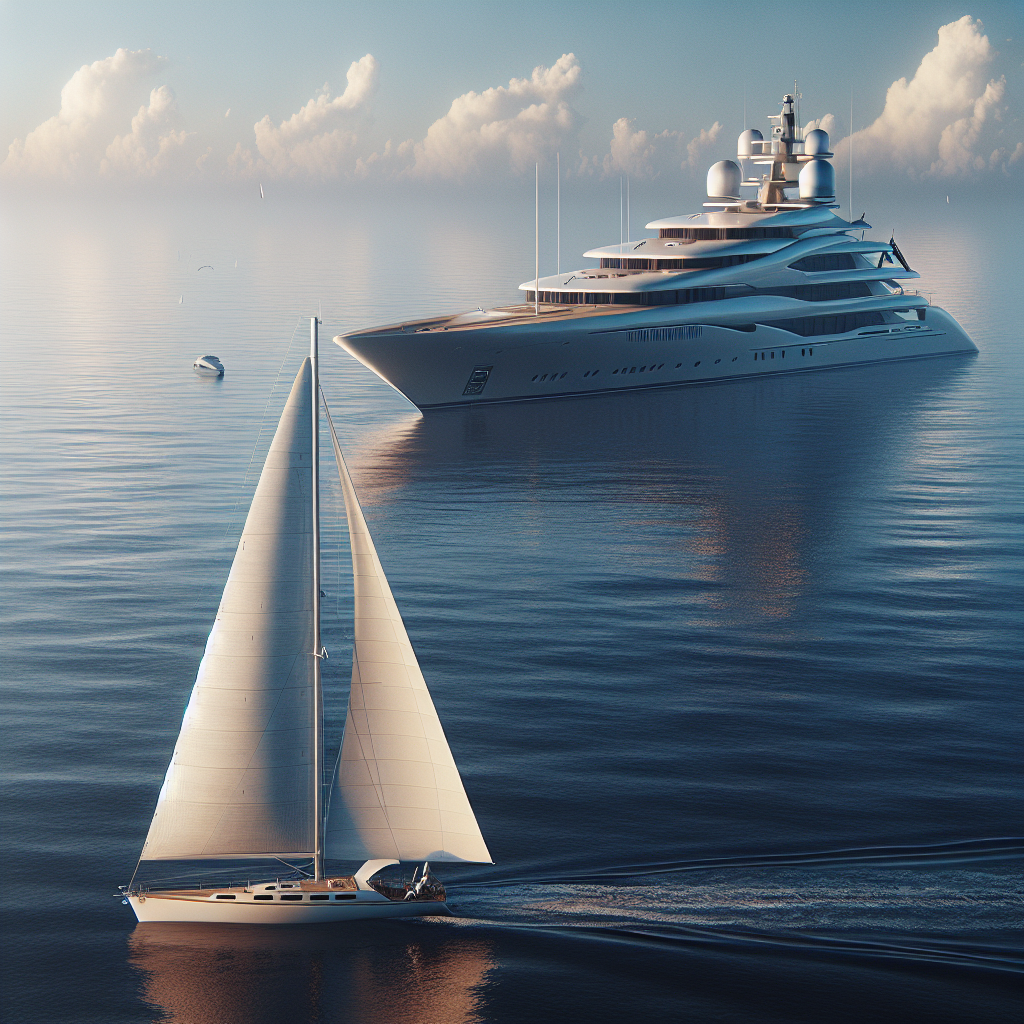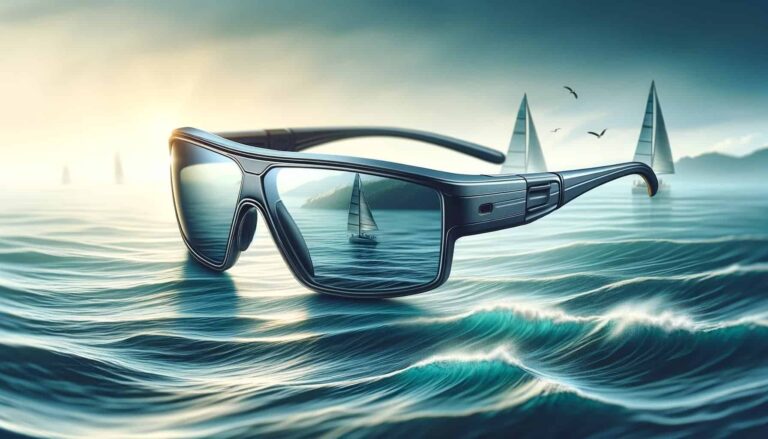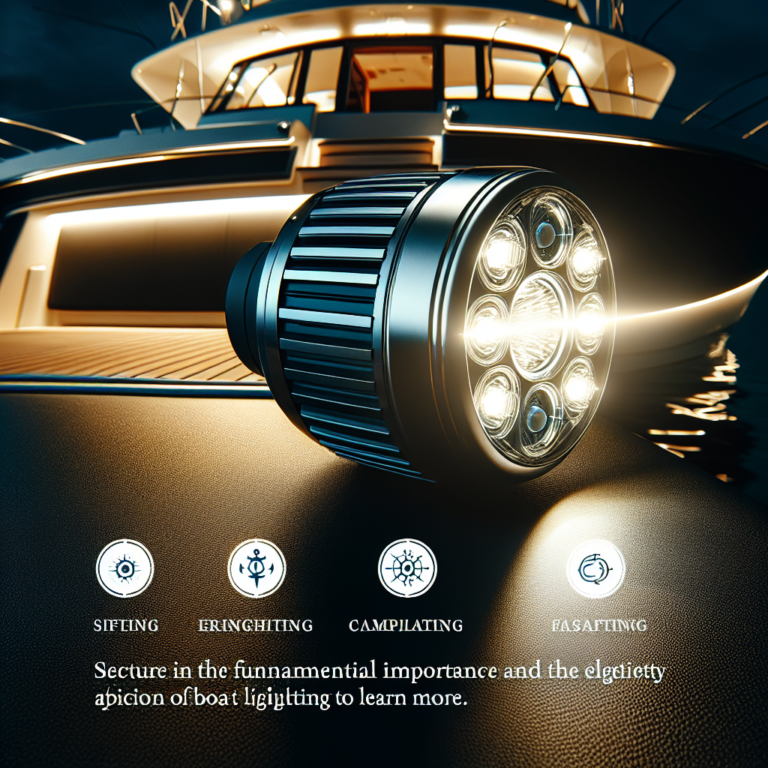Sailing Boat Vs Yacht
So, you’re thinking about taking to the open waters and want to know the difference between a sailing boat and a yacht, huh? Well, you’ve come to the right place! In this article, we’ll give you a quick rundown on these two water vessels, breaking down their similarities and differences, and helping you decide which one might be the perfect fit for your nautical adventures. Whether you’re a seasoned sailor or a newbie to the boating world, understanding the distinctions between a sailing boat and a yacht will surely come in handy when planning your next maritime escapade.
Definitions and Terminology
Clear outline of what a sailing boat is
A sailing boat, also known as a sailboat or sail craft, is a type of boat that is primarily propelled by the wind using sails. It typically features a hull designed to glide through the water and a mast with one or more sails to harness the wind’s power. The size of sailing boats can vary greatly, ranging from small single-handed dinghies to large racing yachts or cruising sailboats.
Clear outline of what a yacht is
A yacht, on the other hand, is a broader term used to describe a recreational vessel that is often associated with luxury and leisure. While a yacht can also be a sailing boat, it typically refers to a larger and more lavish motor-powered vessel equipped with amenities such as cabins, living spaces, kitchens, and even swimming pools and helipads. Yachts can be privately owned or chartered for various purposes such as cruising, racing, or entertainment.
Terms associated with sailing boats and yachts
There are several key terms associated with sailing boats and yachts that are worth familiarizing yourself with. These terms include:
- Keel: The keel is a structural element of a sailing boat or yacht that provides stability and prevents excessive sideways movement.
- Rigging: Rigging refers to the system of ropes, wires, and other components used to support and control the sails on a sailing boat or yacht.
- Cabin: The enclosed space onboard a yacht or larger sailing boat that serves as a living or sleeping area.
- Helm: The helm is the steering mechanism of a sailing boat or yacht, typically consisting of a wheel or tiller.
- Mast: The mast is a tall vertical structure on a sailing boat or yacht to which the sails are attached.
- Hull: The hull is the main body of a sailing boat or yacht that is in contact with the water, providing buoyancy and support.
Understanding these terms will help you navigate the world of sailing boats and yachts more confidently.

Historical Overview
History and development of the sailing boat
The history of sailing boats can be traced back thousands of years, with the earliest evidence of sailing vessels found in ancient Egypt and Mesopotamia. These early boats utilized cloth sails and wind power to navigate waterways and explore distant lands. Over time, sailing boat technology evolved and spread throughout the world, with significant advancements made during the Age of Discovery in the 15th and 16th centuries.
Origins and evolution of the yacht
The origins of the yacht can be linked to the wealthy individuals and nobles of ancient civilizations who used luxurious boats for leisure and entertainment. However, the concept of recreational yachting as we know it today emerged in the 17th century, particularly in the Netherlands and England. Yachts became a symbol of opulence and a way for the wealthy to showcase their status. With the advancement of technology, yachts evolved from being purely sail-powered to incorporating motor engines and modern amenities.
Notable historical differences between sailing boats and yachts
Throughout history, there have been notable differences between sailing boats and yachts. In earlier times, yachts were predominantly larger sailing vessels owned by wealthy individuals, while smaller sailing boats were used for fishing, transportation, or naval purposes. Yachts were often associated with luxury, hosting lavish parties and serving as personal retreats for the wealthy elite. In contrast, sailing boats were more utilitarian, serving practical purposes such as transportation or exploration. However, with modern advancements, the boundaries between sailing boats and yachts have become more blurred, with yachts encompassing a wide range of sizes and designs.

Design and Construction
Exploration of sailing boat design specifics
Sailing boat design takes into account various factors such as hull shape, keel configuration, and sail plan. The hull shape plays a crucial role in determining a sailing boat’s performance and maneuverability. Designs can range from traditional full keel or long keel configurations, offering stability and ease of handling, to fin keels or twin keels that provide enhanced maneuverability and speed. The sail plan includes factors such as the number and size of sails, their positioning, and the type of rigging. Different sail configurations, such as sloop, cutter, or ketch, offer varying levels of versatility and performance.
Examining the architectural style of a yacht
Yacht architecture focuses on creating luxurious and comfortable living spaces while providing efficient and reliable propulsion systems. The design of a yacht emphasizes amenities and features that enhance the onboard experience, such as spacious cabins, entertainment areas, and state-of-the-art technology. Yachts also incorporate motor engines, allowing them to move efficiently even in the absence of wind. The architectural style of a yacht can vary significantly, ranging from sleek and modern designs to more traditional and elegant aesthetics.
Comparison of the construction methods for both sailing boats and yachts
The construction methods for sailing boats and yachts typically involve the use of different materials and techniques. Sailing boats often utilize materials such as fiberglass, wood, or aluminum for their hulls, with the choice depending on factors such as cost, weight, and durability. Yachts, particularly larger motor-powered ones, are often constructed using advanced composite materials such as carbon fiber, providing strength and weight savings. The construction process for both sailing boats and yachts involves a combination of skilled craftsmanship, engineering expertise, and attention to detail to ensure structural integrity and performance.

Size and Capacity
Discussion on the sizes of sailing boats
Sailing boats come in a wide range of sizes, from small dinghies that can be easily handled by a single person, to larger cruising sailboats that can accommodate a family or a small group of people. The size of a sailing boat is often determined by its purpose, with racing sailboats being designed for speed and agility, while cruising sailboats focus on comfort and extended stays on the water. The size of a sailing boat also impacts its handling characteristics, with smaller boats being more maneuverable but potentially less stable in rough conditions.
Understanding the sizes of yachts
Yachts, particularly motor-powered ones, tend to be larger than sailing boats due to the additional space required for accommodation, amenities, and engines. They can range in size from relatively small vessels suitable for day trips or short voyages, to superyachts that span several stories and can accommodate a substantial number of guests and crew. The size of a yacht often reflects the owner’s desire for space, comfort, and an enhanced onboard experience, while also considering the practicality and regulations for navigating certain waterways.
Capacity comparison: How many people can a sailing boat vs a yacht accommodate
The capacity of a sailing boat or yacht depends on its size, design, and layout. Smaller sailing boats are often designed for one or two people, whereas larger cruising sailboats can comfortably accommodate a family or a small group of friends. Yachts, with their spacious interiors and multiple cabins, can cater to larger groups of people, including guests and crew. The capacity of a yacht can range from a handful of guests on smaller vessels to dozens or even hundreds of guests on mega yachts designed for entertaining and hosting events.

Function and Use
The primary uses of a sailing boat
Sailing boats serve a variety of purposes depending on their design and size. Some sailing boats are primarily used for recreational purposes, such as day sailing, racing, or cruising along coastal areas. Others are designed for long-distance open water passages, enabling sailors to embark on adventurous voyages and explore remote destinations. Sailing boats are also extensively used for sail training, teaching beginners the art and techniques of sailing, as well as for competitive sports such as regattas or Olympic events.
The variances in yacht applications
Yachts have a wider range of applications compared to sailing boats, thanks to their larger size and motor-powered capabilities. Yachts are commonly used for cruising and leisure purposes, providing a luxurious and comfortable experience for owners and their guests. They can also be chartered for vacations, corporate events, or special occasions. Yachts are sometimes used for professional purposes, such as research expeditions or as floating offices for business executives. Additionally, there are dedicated racing yachts built specifically for participating in competitive yacht racing events.
Comparison of sailing boat and yacht in terms of versatility and functionality
While both sailing boats and yachts offer recreational and cruising capabilities, yachts tend to provide a higher level of versatility and functionality due to their larger size and motorized propulsion. Yachts can easily navigate waters without relying solely on wind conditions, making them more suitable for longer journeys or reaching specific destinations. Sailing boats, however, offer a more traditional and immersive sailing experience, relying on the power of the wind and requiring a greater understanding of meteorology and navigation skills.

Operation and Handling
Handling and maneuverability of sailing boats
Sailing boats rely on the power of the wind to propel them forward, necessitating a different approach to navigation and handling compared to motor-powered vessels. The handling of a sailing boat involves coordinating the adjustment of sails, controlling the steering mechanism, and effectively using the vessel’s weight distribution. Sailing boats require sailors to understand wind patterns, tides, and sail trim to optimize speed and maneuverability. Additionally, sailors must be skilled in performing maneuvers such as tacking, gybing, and reefing to adapt to changing wind conditions.
Yacht operation specifics
Operating a yacht involves a combination of motor propulsion and sailing, particularly for yachts equipped with sails. Yachts typically have multiple engines, allowing for greater maneuverability, even in tight spaces such as marinas. Yacht operators must be knowledgeable in navigation techniques, including the use of navigational charts, GPS systems, and radar. Yachts often have advanced onboard systems for monitoring and controlling various functions, requiring operators to have a good understanding of technology and onboard systems management.
How sailing boat operations compare with those of a yacht
The operations of sailing boats and yachts differ primarily in their propulsion systems and handling techniques. Sailing boats rely solely on wind power, necessitating a deeper understanding of sail handling, trim, and wind dynamics. Skippers of sailing boats must be skilled at reading weather conditions, adjusting sails accordingly, and utilizing sailing maneuvers to optimize performance. Yachts, while also benefitting from sails, have the additional advantage of motor propulsion, making them more versatile and easier to handle in adverse weather conditions or when maneuvering within confined spaces.








